Lateral Reading (8-9)
This is the grade 8-9 (ages 13-14) version of this lesson. There are also grade 6-7 and grade 10+ versions on the site.
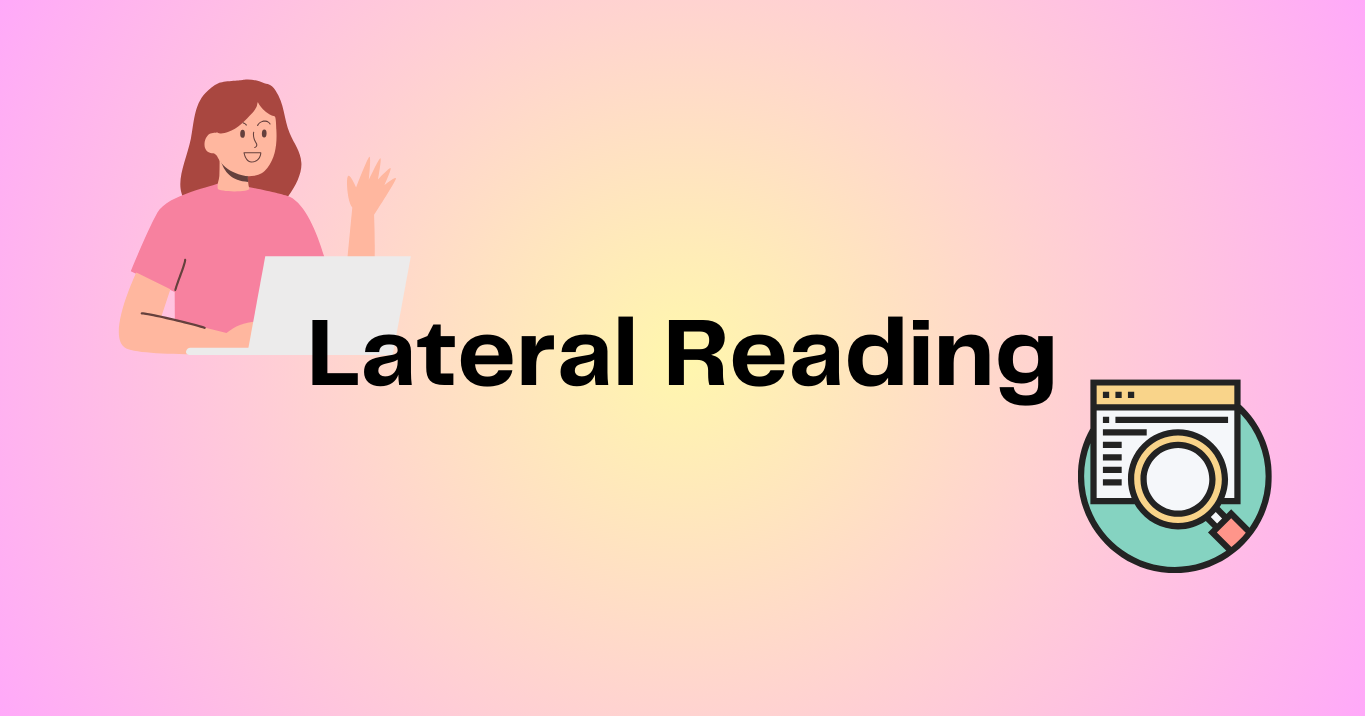
![]() If you'd like to have someone read this section for you, click play below.
If you'd like to have someone read this section for you, click play below.
When looking at sources online, the abundance of information can be overwhelming.
It is often impossible to tell reliable information from unreliable information.
Whether we’re using online information for our personal interests, to communicate with others, or for a school project, we need to know how to sort trustworthy content from the rest of the internet.
Fortunately, there is a strategy that can help called lateral reading!
Lateral reading lets us quickly assess whether an information source is true or false.
What is lateral reading?
![]() If you'd like to have someone read this section for you, click play below.
If you'd like to have someone read this section for you, click play below.
Most of us use Vertical Reading when consuming online content:
- Reading one article at a time, from top to bottom
- Evaluating content based on how the site itself looks
- Official-looking logos, trusting .org domains
- How professional the name of the organization sounds
- You first consume the content and then evaluate it.
The danger with this approach is that you consume a lot of false content before knowing if you should trust what the site is claiming. This is very time-consuming, leaving less time to research and read trustworthy content.
In the ideal scenario, before you read any content from any site, you would know if the site is credible. Lateral reading is a technique that professional fact-checkers use. By using lateral reading ourselves we can be like fact checkers.
Lateral Reading is very different from Vertical Reading:
- Instead of reading one article from top to bottom, Lateral Reading encourages you to stop reading as soon as you know the general topic, the claims being made, and the people behind the article.
- Open several tabs and look for information about the topic, the sources, and the organization behind the site.
- Conduct research on the specifics of the site - who is running it, what are trusted sources saying about them, and are they known to lie or spread conspiracies?
- Your goal is first to determine if the site and its information are worth consuming.
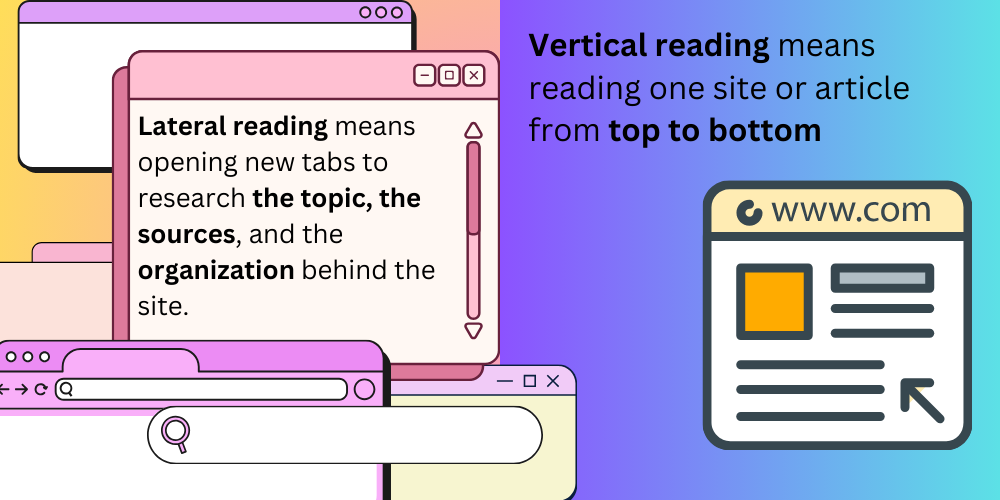
Use effective search questions
When conducting Lateral Reading, research these questions:
- Who funds or sponsors the site?
- What do other authoritative sources have to say about the site?
- When you search for the topic, what do you see? Does it seem like they could be lying or could be untrustworthy?
- Are the initial results from fact-checking organizations?
- Do other experts disagree? Why or why not?
- When you google the author or the organization, do you see articles questioning the author’s integrity or intent? Has the author been part of any controversies, and have their other claims been debunked before?
- Does what you’re finding elsewhere contradict the article?
- Are credible news outlets reporting on (or perhaps more importantly, not reporting on) what you’re reading?
Fact-checking involves searching for articles on the same topic by other authors.
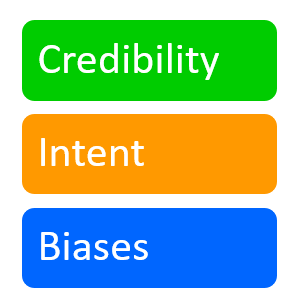
Also, searching for other articles by the same author. This helps us figure out:
- Is the author credible?
- What is the author’s intent?
- What biases does the author have?
Use the SIFT technique
For those who like a challenge, here is another advanced lateral reading technique you can try. Fact-checkers use a SIFT technique to help determine what sources to ignore.
The SIFT technique is regularly used by library associations. There are four moves, as explained in the following videos by Michael Caulfield, Director of Blended & Network Learning at Washington State University.
Move #1 Stop. As we learned above, the first move in lateral reading is to stop looking further at a source.

Move #2 Investigate the source. Learn what you can about the organization from sites other than the company’s own.
- Learn more about Investigating sources
-
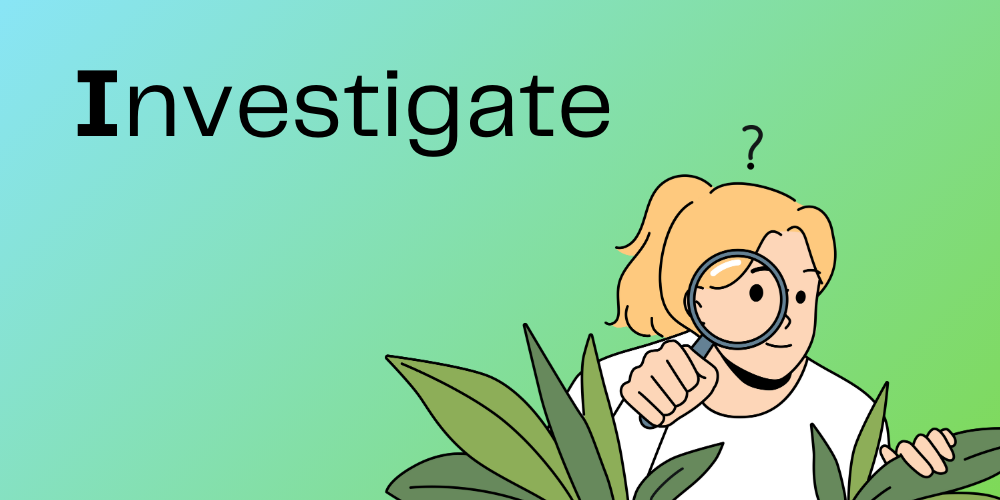
Move #3 Find trusted coverage on the topic.
Using trusted fact-checking sites can speed up the process, as some of the checking work may already have been done for you. For example, Snopes.com, politico.com and FactCheck.org are all dedicated fact-checking websites. The Associated Press, Reuters, and other newswire services also regularly publish fact-checking content. Always double-check!
- Learn more about finding trusted coverage
-

Move #4 Trace claims, quotes, and media back to the original context.
Returning to the original source helps us figure out whether the claims being made are coming from reputable sources. Building up a library of trusted sources can make it easier!
- Learn more about finding and tracing claims back to the original context
-

TIP: There is a quiz question on the SIFT technique, so try to remember the keywords for what SIFT stands for.
Lateral reading example 1
The following lateral reading example is created by MediaWise, PBS (found at pbslearningmedia.org/resource/how-sensational-claims-spread-misleading-info/video-mediawise-student-reporting-labs/)
How Sensational Claims Can Spread Misleading Information
Social media posts that stir up strong emotions are more likely to go viral.
We tend to spend more time on posts that make us laugh, angry, or shocked.
In this lateral reading example, MediaWise fact-checker Isaac, age 17, checks out a TikTok video report by Dylan Page suggesting that Africa may be in danger of splitting.
Dylan has over 2 million likes and a big following and clearly knows that sensationalism can gain an audience. But how credible is this claim?
![]() If you'd like to have someone read this section for you, click play below.
If you'd like to have someone read this section for you, click play below.
Who developed lateral reading?
The concept of lateral reading was developed by the Stanford History Education Group (SHEG) led by Sam Wineberg.
SHEG compared the way college students and professors evaluated an article compared to professional fact-checkers. They found that the fact-checking approach was more accurate and coined it lateral reading.
![]() If you'd like to have someone read this section for you, click play below.
If you'd like to have someone read this section for you, click play below.
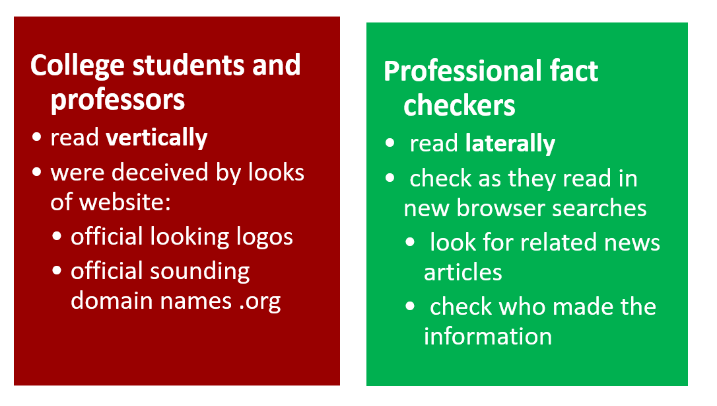
Lateral Reading Example 2
The following lateral reading example was created by librarians at Piedmont Virginia Community College. (libguides.pvcc.edu/lateral_reading/example)
In this example, imagine you are doing research on the topic of renewable energy and climate change.
![]() If you'd like to have someone read this section for you, click play below.
If you'd like to have someone read this section for you, click play below.
Now that you have learned how to use lateral reading you’ll be able to quickly assess whether an information source seems true or false. Lateral Reading is an ongoing, lifelong process, and takes practice! Remember, if it seems false (and there are a lot of information sources out there that are false, or partly true but don’t give adequate context or details) it’s best to MOVE ON and look for more reliable sources.
All lessons & quizzes are free!
This was just one of the lessons in our Critical Thinking section. There are over 500 lessons on Kids Boost Immunity just like this one on a variety of subjects. Each lesson includes a quiz and every time a student scores 80% or higher on a quiz, we will donate life-saving vaccines to UNICEF Canada. Sign up now!





